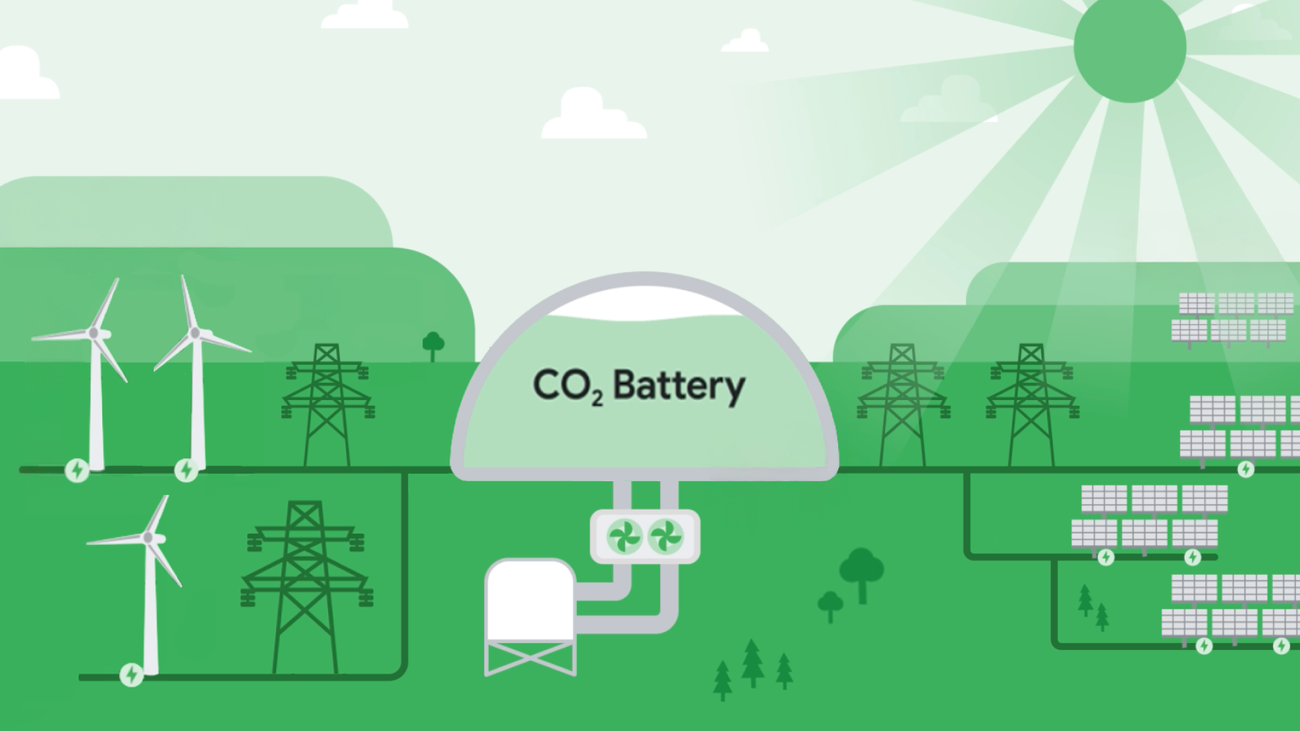Electricity powers the modern life. And we accelerate a wide range of technologies, from improved geothermal to advanced nuclear to even merger technologies that can enable a future where on-demand electricity needs are met with pure energy, every hour every day.
Today we add another technology to our portfolio: Long duration Energy Storage (LDES). Through a new long-term partnership with Energy Dome, we plan to support more commercial projects globally to implement their LDES technology.
Energy Domes new CO2 battery can store excess clean energy and then send it back to the grid for 8-24 hours that embark on the space between when renewable energy is generated and when needed. With this commercial partnership as well as an investment in the company, we believe that these projects can lock new clean energy to grids, where we operate by 2030, which helps to meet the need for the nearest electricity system and move closer to our 24/7 carbon-free energy target.
By bringing this first-of-a-kind LDES technology to the market faster, we aim to quickly bring its potential to society to society throughout make reliable, affordable electricity available around the clock, supporting the resistance of grids as they integrate growing amounts of renewable energy sources.
Why it is important
Lithium-ion batteries that typically store and transmit power for 4 hours or less have been critical for adding electricity capacity to grids and dealing with short-lived oscillations in sustained production-when the sun is not shining or the wind is not blowing. Google’s support for these batteries with shorter duration has helped the grids we depend on, from Belgium to Nevada, meet the maximum demand for electricity and reduce the need to increase fossil fuel power plants.
But what if we could store and send clean energy for more than a few hours or even a whole day? Studies from Electric Power Research Institute show that LDES technologies can cost-effectively integrate a growing volume of renewable energy on electricity systems and contribute to more flexible, reliable grid. The LD’s council estimates that the implementation of up to 8 terawatts (TW) in LDES by 2040 can result in $ 540 billion in annual savings globally, partly thanks to their ability to optimize grids.
How the technology works
Energy Domes new approach to energy storage uses carbon dioxide (CO₂), which is held in a unique dome -shaped battery. When there is an abundance of renewable energy on the grid, the system uses this power to compress CO₂ gas for a liquid. When the grid needs more pure force, the liquid CO₂ is expanded back to a hot gas under pressure, creating a powerful force – just as steam escapes from a pressure cooker – which turns a turbine. This spinning turbine generates carbon-free energy that can flow directly back into the grid in durations from 8 to 24 hours.
Energy Dome has already demonstrated the product market, which fits by signing several contracts for commercial scale projects in Italy, the US and India. The technology has already proven to be successful after injecting electrons into the Italian grid for more than three years thanks to their commercial demo plants and now with their 20MW-200 WH-commercial plants at full scale.
Why scale is essential
Ldes, which Energy Dome leads with its CO2 battery, has the potential to commercialize much faster than some of the other advanced pure energy technologies in our portfolio. This means that we can use it in the short term to help the electricity system grow more flexibly and reliably with other tools we develop, such as answers to data center.
By supporting more commercial implementations of Energy Domes Technology globally and making an investment in the company, we aim to bring this technology to scale faster and to lower costs. In addition to our long-term collaboration with Energy Dome, we plan to support a growing range of LDES technologies under development through both commercial agreements that can catalyze wider market uptake of more mature technologies, such as Energy Dome’s, as well as investments in the previous phase.
To remove barriers to implementation and commercialization of LDEs and other advanced carbon -free energy technologies, we also advocate for pure energy policy, which ensures that energy markets fully value, flexible carbon -free technologies and promote political measures that enable infrastructure that are essential for grid carbonization and energy.
We are happy to take this first step with the Energy Dome to unlock the full potential for LDEs. Our partnership will strengthen the grid resistance while running our technologies, growing our economies and keeping lights on in our home with 24/7 clean energy.
